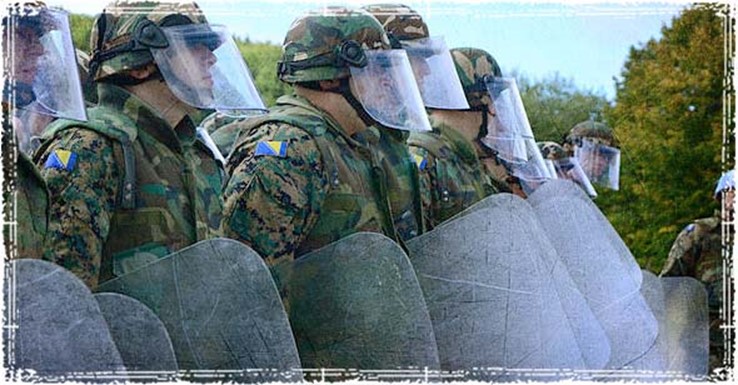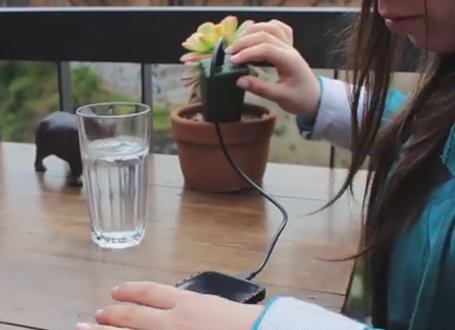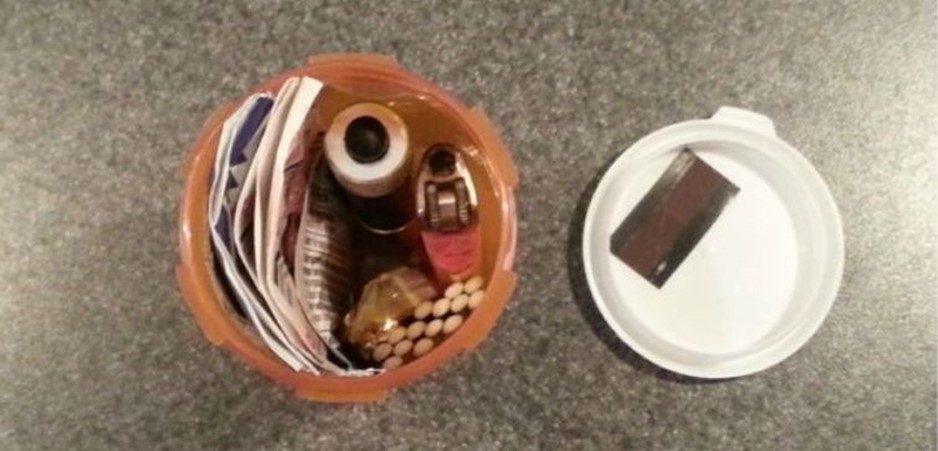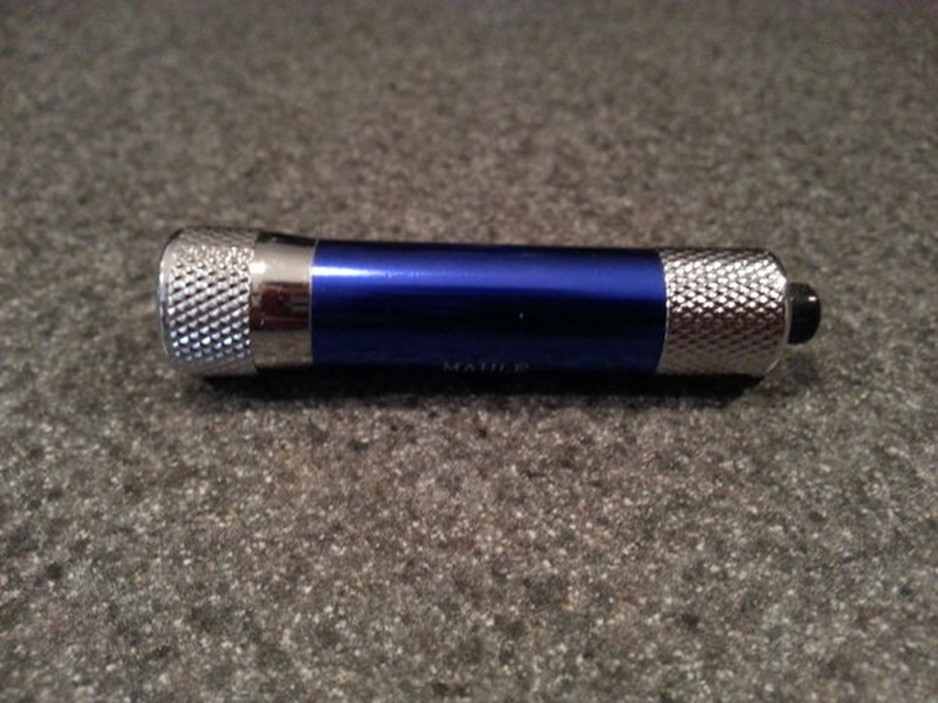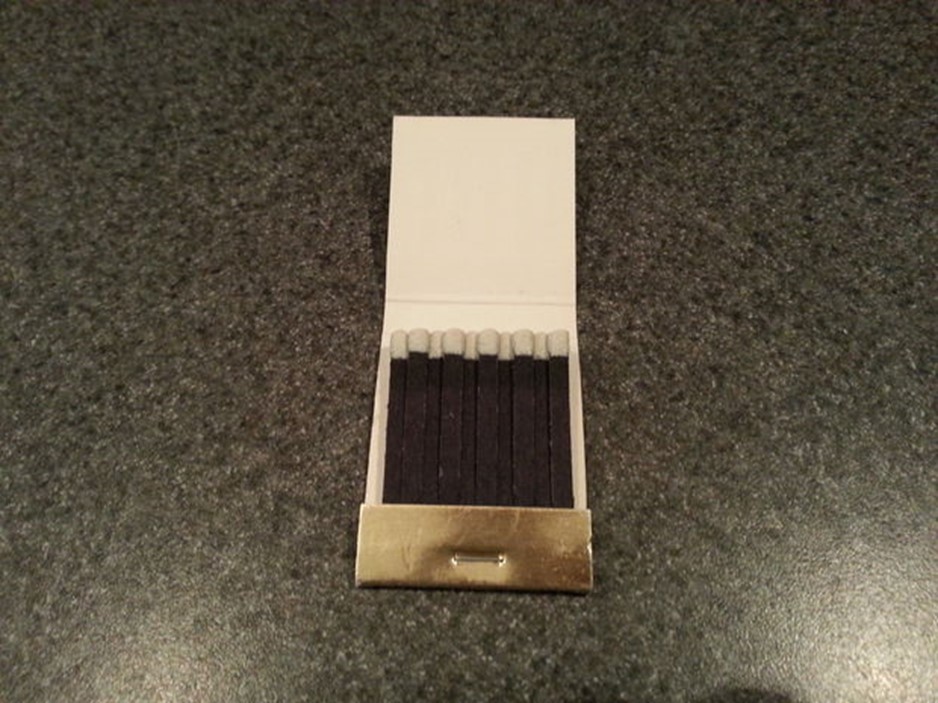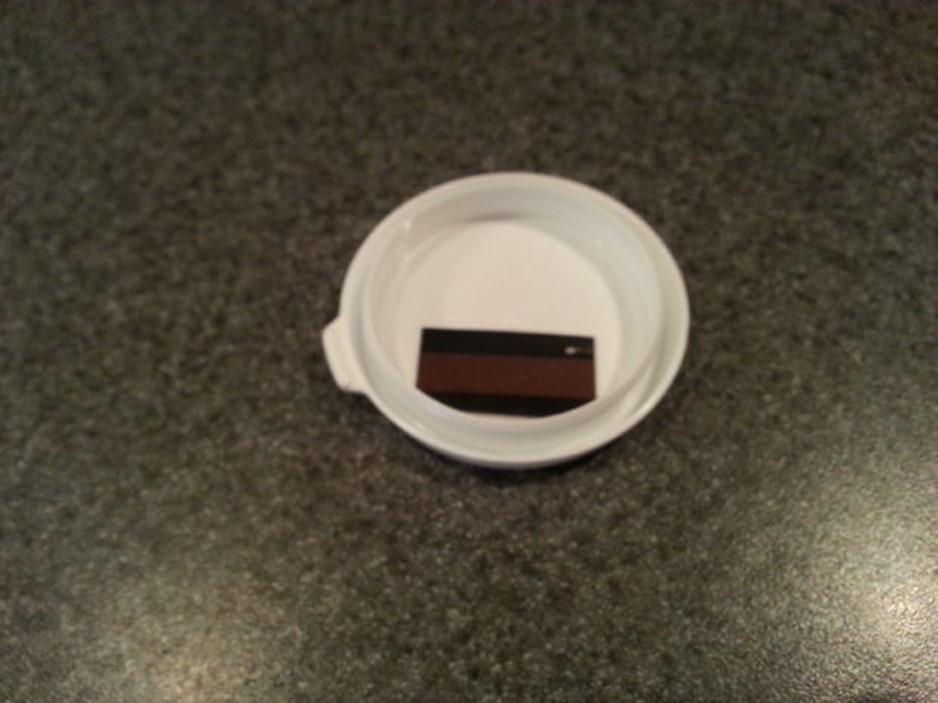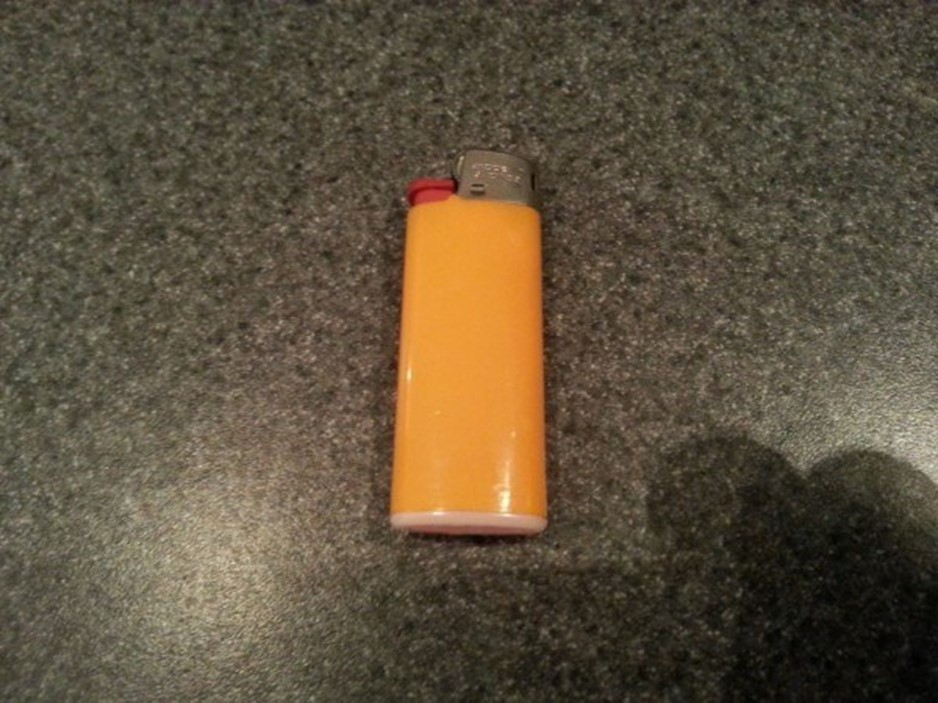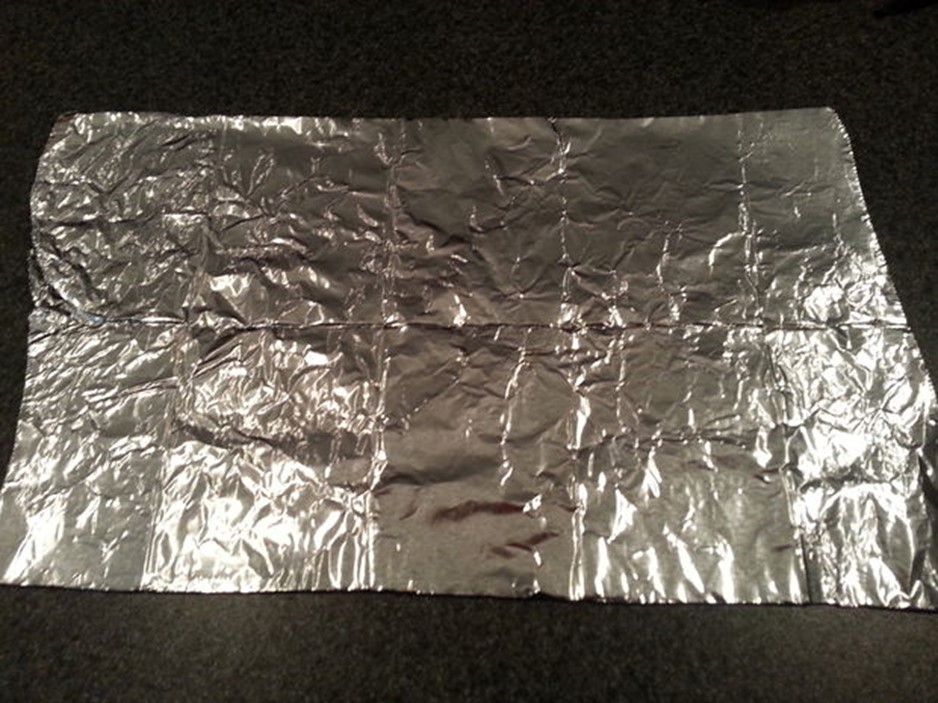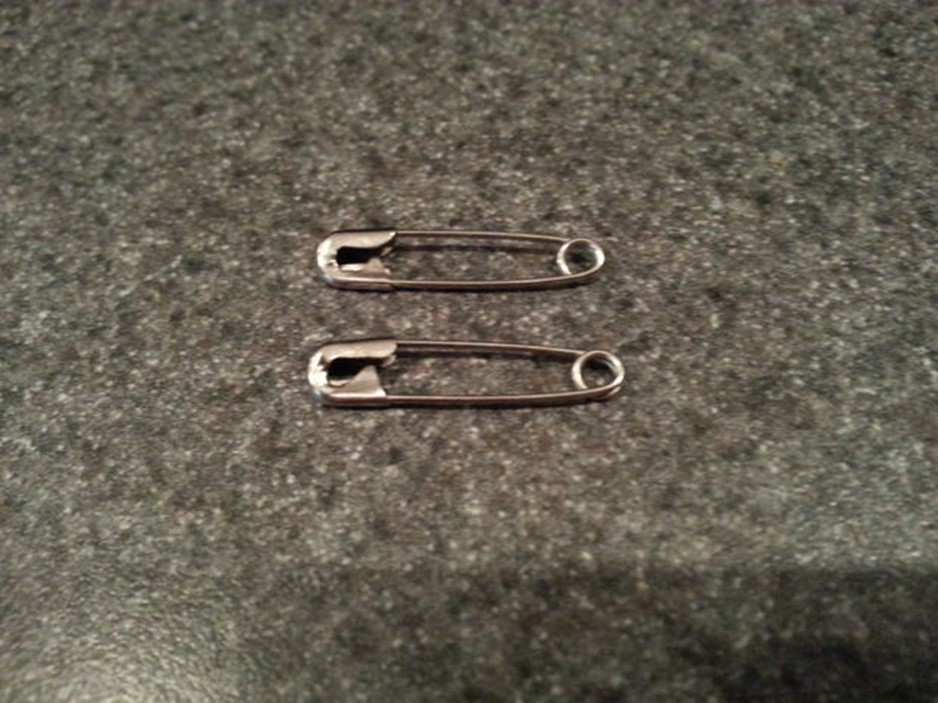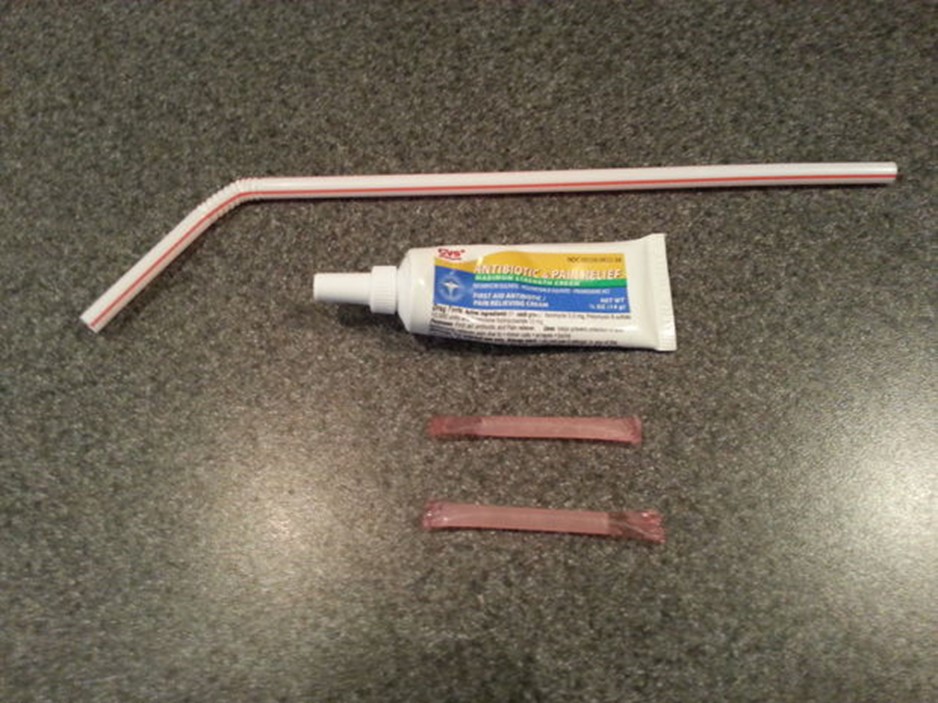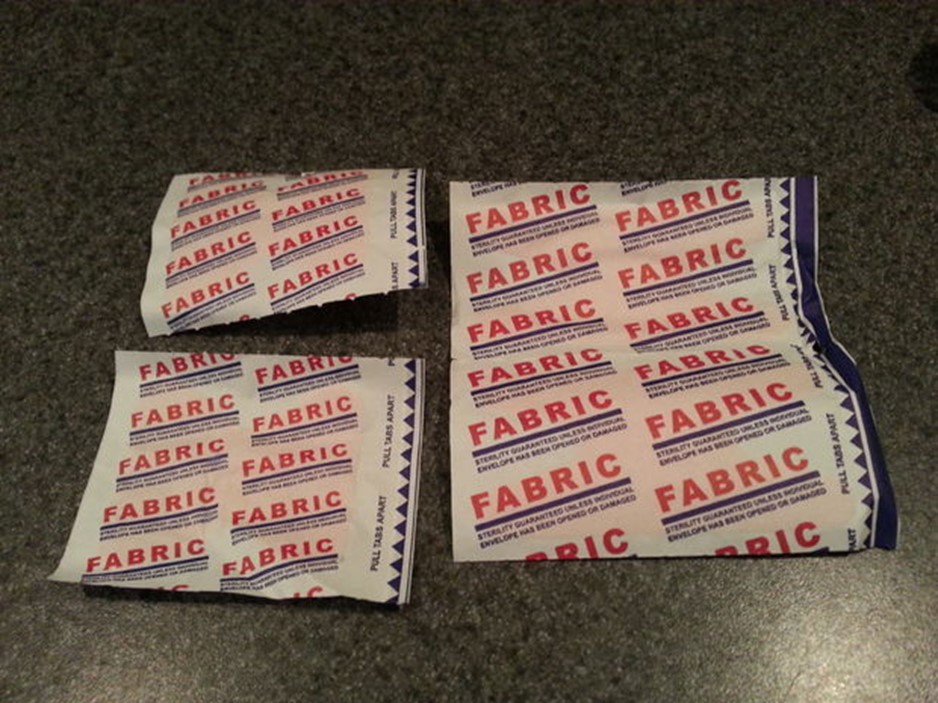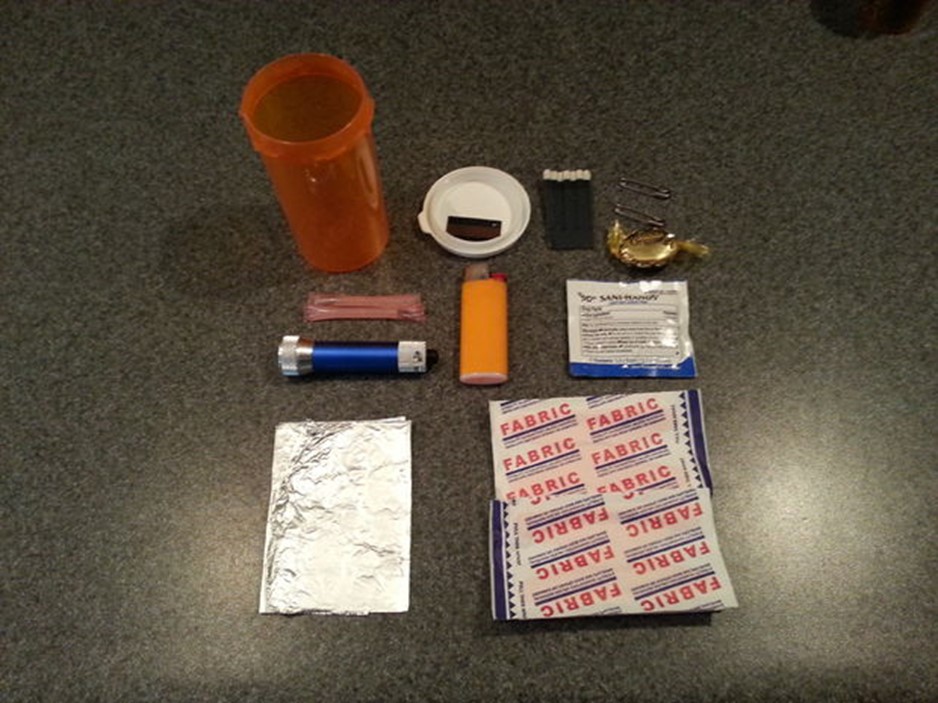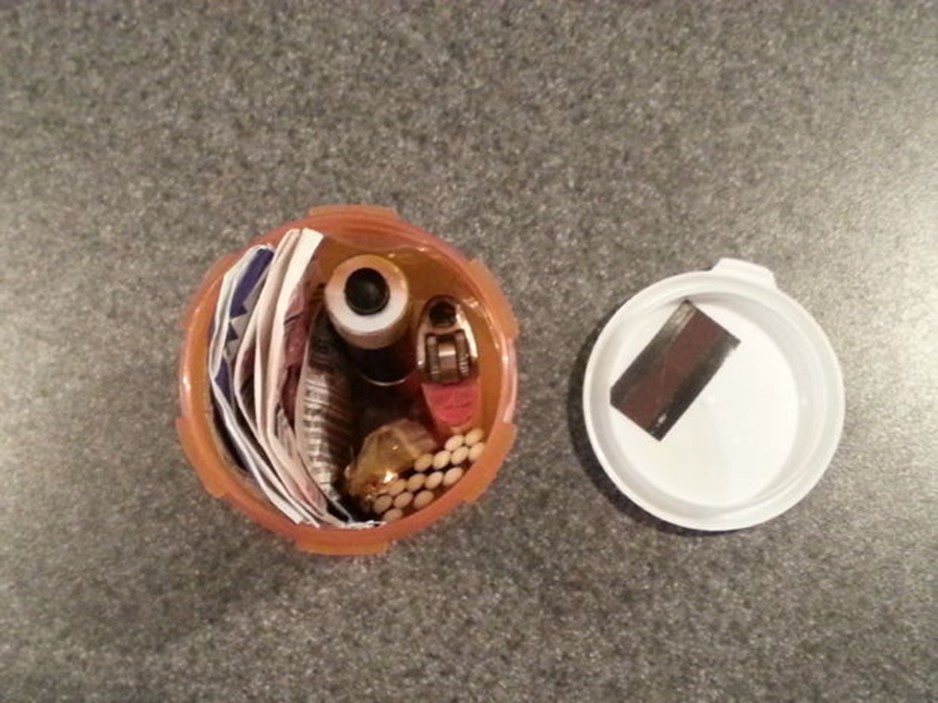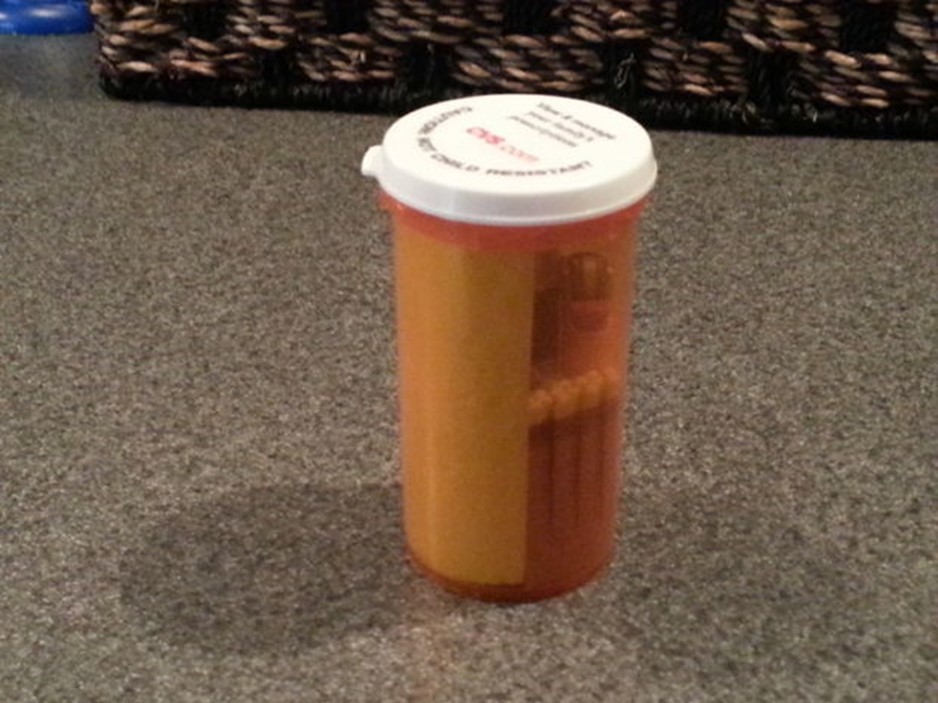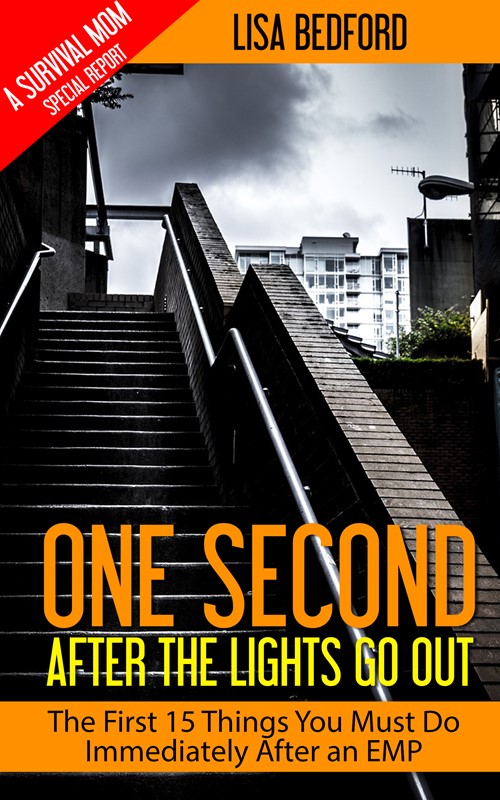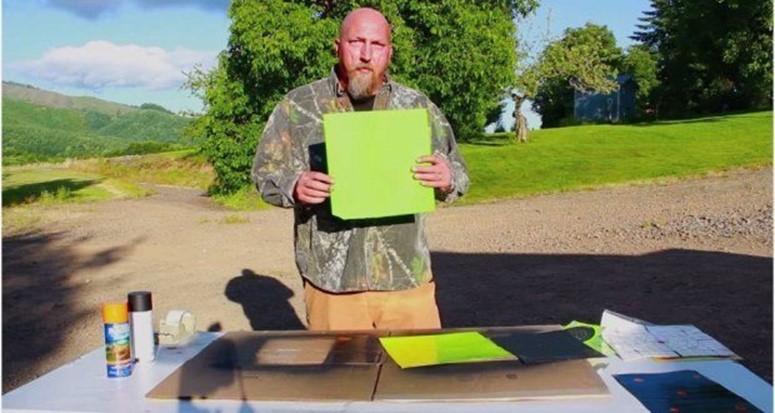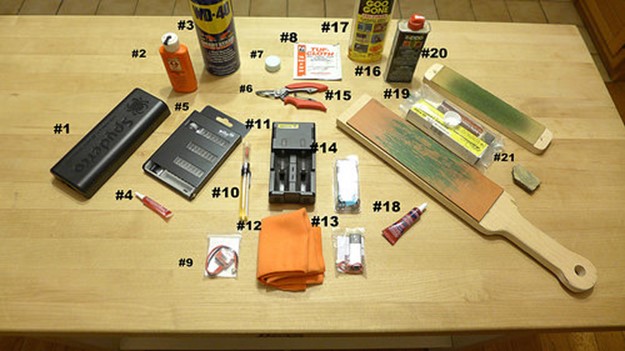
Source: Flickr
I have been asked for a long time to lay out all of my EDC maintenance stuff. This was done in a shorter form a long time ago, here. Over time I have refined and upgraded what I use. And then I found Kevin Kelley’s Cool Tools, and I starting thinking about this stuff more carefully. I tested and refined this set of things until I found the exact right tools for the job. For example, I tried out three or four different formulations of Loc-Tite. I did that so you don’t have to.
For reference, I tried to pin each number to the top and left of the given object. Hopefully it will be obvious what they are once I describe them.
#1: Spyderco Sharpmaker: There are a lot of expensive and automated ways of reprofiling an edge, but they basically do what the Sharpmaker does with a bit more precision or speed. For around $60 this will get you started, and once you add stropping to your knife maintenance regime, you probably won’t find a need for anything more.
#2: Hoppe’s #9 Lubricating Oil: I know lots of folks like Rem Oil, but this is pretty darn good. I don’t use it as much as I used to (you’ll see why in a minute), but for big or really stuck things, this works wonders.
#3: WD-40: I love the smell of WD-40. It smells so clean. Oh, and it also prevents rust from building up and lubricates parts. I like running some of this on a fixed blade before and after big cutting jobs, especially if the fixed blade is a high carbon model. Also, note the can; the spray/straw variant is very handy and easily worth the upgrade in price (of like $0.70).
#4: DeOxIt Red: There are a few variations of this deoxidizing liquid, but Red is the one you want. This will clean connectors in a flashlight, and you need only very smallest drop. Good thing too because it is exceedingly expensive. One hundred percent worth it, as it can fix lights that nothing else can, but be careful; a big squeeze is like $9 worth of red stuff.
#5: Wiha Micro Driver Set with Rotating Tail Caps: This is also expensive, but as I have mentioned before with the upgrade treadmill, buy good stuff right away and you will save money. I spent $70 over 5 years buying Kobalt, Craftsman, and Husky sets that all rounded off instead of buying this $60 set. Stupid, stupid, stupid. Be sure to get the ones with the rotating tail cap, that way you can apply pressure and still rotate the screw. $60 might seem like a lot, but when you strip a screw on a custom knife because of crappy drivers, you’ll wish you ponied up the cash.
#6: Split Ring Pliers: Over the years I have reviewed dozens of things with split rings, and some were really tough. These cheap pliers work exceedingly well. You can find them in the fishing aisle at Wal-Mart for $8. It’s definitely worth it if you have a tool keychain, a Swiss Army Knife, or any number of things that run annoying split rings.
#7: Silicone: Your lights all have o-rings, so once a year, grab some of this and coat them with it. It will keep them nice and rubbery. Dry o-rings can crack and lose their watertight seal. Use this and they won’t. It’s cheap and takes about 3 minutes to do a dozen lights.
#8: Tuff Cloth: This is a great rust inhibitor designed specifically for knives, tools, and firearms. It’s pricey, but a few packs in a backpack can keep your blades looking nice over a long camping trip.
#9: Cotton Picker’s Micro Battery Charger: For those uber-tiny cells, no other arrangement will do. The Cotton Picker design is great. In a pinch it can charge RCR123as. Opt for the metered version, as it is not much more money and allows you to leave a battery to charge and only momentarily check on it. Otherwise you should probably sit and wait. Lithiums and overcharging don’t mix.
#10: Nano-Oil in Needle Tip Applicator: Hoppe’s, WD-40, and the like all pale in comparison to this miracle liquid. Like the DeOxIt, this stuff is uber-expensive, but it is 100% worth it. The needle tip applicator is an absolute must. Don’t bother unless you can get this feature. Otherwise, you will waste a lot of liquid and you won’t be able to get in to the nooks and crannies you need to to make this stuff really work. This is probably my favorite thing in this picture as it can rescue stuck pivots and change below average pivots into “I swear this is on bearings” smooth.
#11: i2 Intellicharger: It’s not ideal, but it’s the best out there right now for under $100. This dual well charger can take everything from RCR123as all the way up to 18650s. It can’t do super small cells, hence #9, but it does everything else. I really like the fact that you can put two totally different batteries in the charger at the same time. So many of my lights are single cell lights that I don’t often need to charge to identical batteries. I wish it weren’t so finnicky about battery placement, but every other model out there is just as bad or worse.
#12: Microfiber Cloth: Just 100% essential. They are great for cleaning a knife or polishing a flashlight lens. Simple, cheap, and awesome.
#13: Cotton Picker Volt Meter: This is a handy little thing to have but probably not essential. It’s helpful with super small cells because most regular volt meters have a hard time getting around their tiny structures.
#14: Spare O-Rings: Uber cheap and handy to have around, o-rings are a necessity if you like flashlights. Invariably something will dry out and break or get sliced in a dreaded cross threading accident.
#15: Home Made Strop: This is made from an old barber’s strop; it’s two pieces of leather mounted on pressboard, a void free form of Baltic Birch plywood. One side is coarse and the other side is smooth. Strops are just too good. Since using them I have basically stopped using the Sharpmaker. Regular stropping is all you really need. This was free. A leather belt with some Tripoli compound would work too.
#16: Naphtha Lighter Fluid: I don’t smoke, but I do use this to clean parts and it works very, very well. It is also dirt cheap; this bottle was $2 at a cigar store.
#17: Goo Goo: When naphtha can’t be used because of the smell, this does the job. I think it works a little better, but I have no evidence of that. It is, however, not as cheap, so if you can only get one, get the naphtha.
#18: Loc Tite Blue 242: After trial and error I think this is the perfect formulation for our needs. I use it to lock in pivot screws that like to walk around, and in that application it works fine. Any stronger and it is hard to undo, and any weaker and it doesn’t work as well. The Goldilocks Principle makes this the right choice.
#19: Stropping Compounds: Get the black Tripoli compound for coarse and the green compound for fine. If you have the ability, finish it off with white compound. Be sure to keep them in a ziplock as they can dry out and lose their effectiveness (they won’t stick to the strop, crumbling on the surface instead).
#20: Secondary Strop: This will eventually be converted to white compound only, but for now it is a suede leather surface with green compound. The suede makes it a little softer on the steel and you can get a pretty nice polish with it just by using an even, quick motion with your hands (god that sounds terrible, but you know what I mean).
#21: Sandstone: This is what I use to sharpen my BK9 when I am away from the house. It’s very flat and very coarse, but in a jam it can put an edge back on the beast. Sandstone works well as the coarse sharpening stone and granite would work well in the fine slot, provided it is smooth and flat. You’d be surprised at how good of an edge this can put on a knife. Don’t buy one when you can find a field sharpening stone pretty easily.
There you have it: a relatively complete, time tested kit for maintaining your gear. For multitools, flashlights, and knives, this will get you a very, very long way.
One thing I also use that I couldn’t get in the picture: an air compressor. It blows gunk out of a knife or multitool quite well. Just don’t use it to dislodge a stuck battery in a flashlight. That’s also called an air gun. I have a AAA shaped dent in my workshop bench to prove that this is dangerous.
Start now to make sure you are staying prepared.
Via: alloutdoor
 by Dale Martin. This book includes pest snares, large animal snares, and transplant traps, plus camp alarms that alert you to intruders and deadly pathguards that could save your life.
by Dale Martin. This book includes pest snares, large animal snares, and transplant traps, plus camp alarms that alert you to intruders and deadly pathguards that could save your life.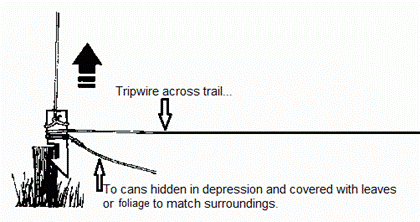
 Follow
Follow